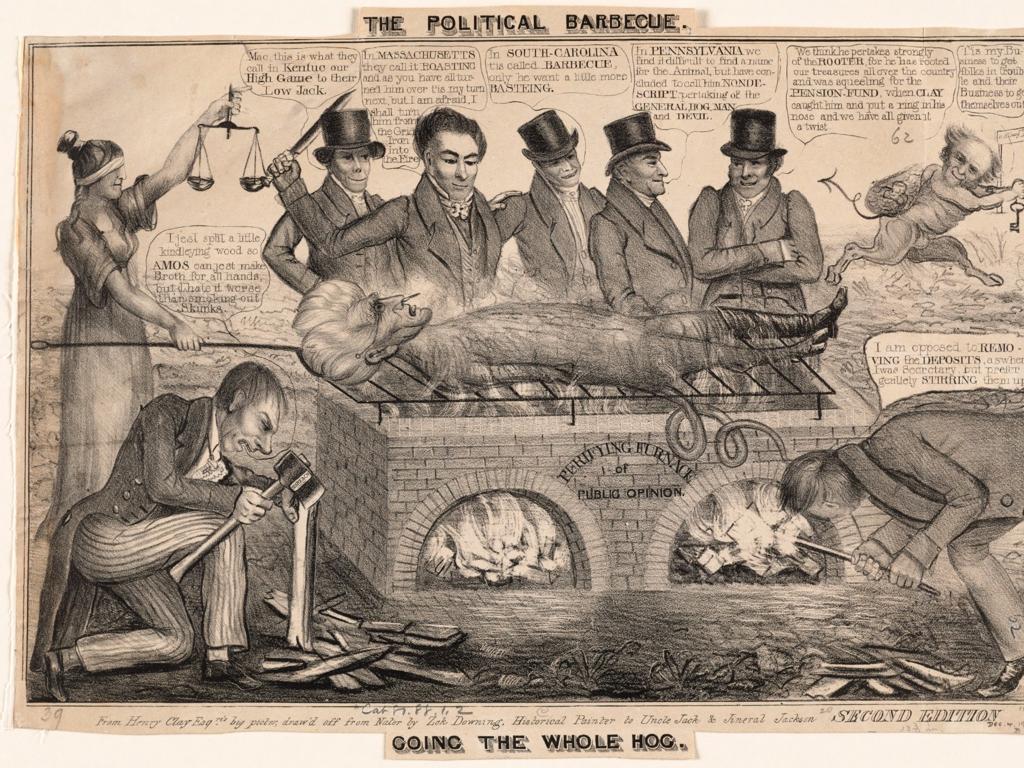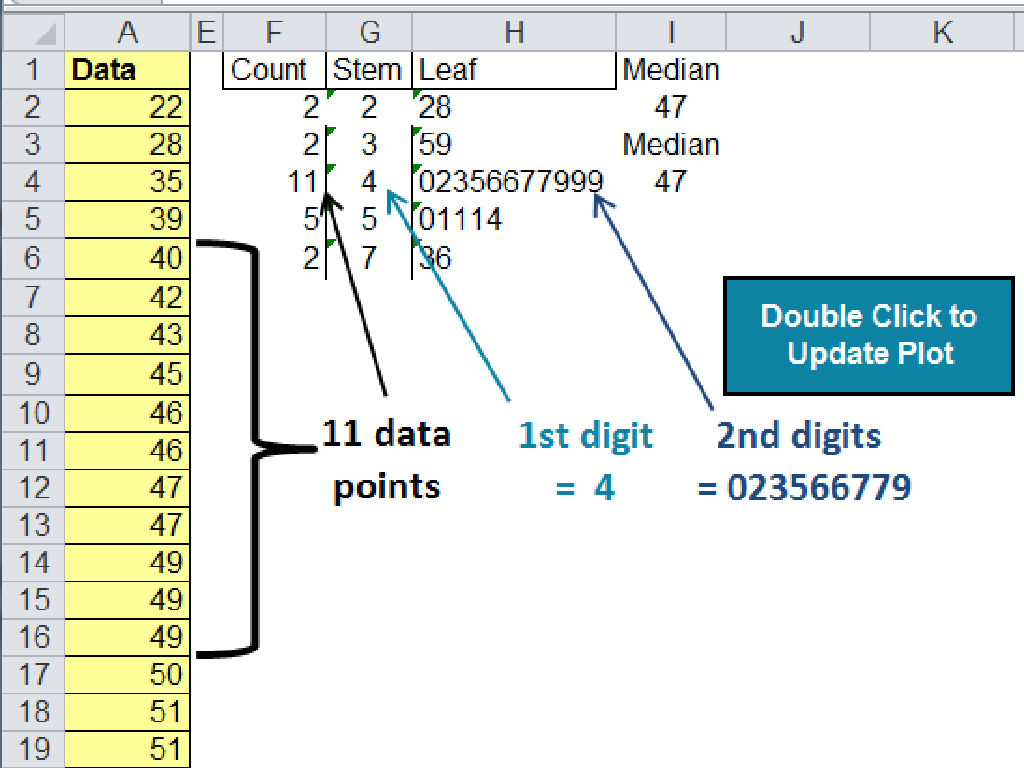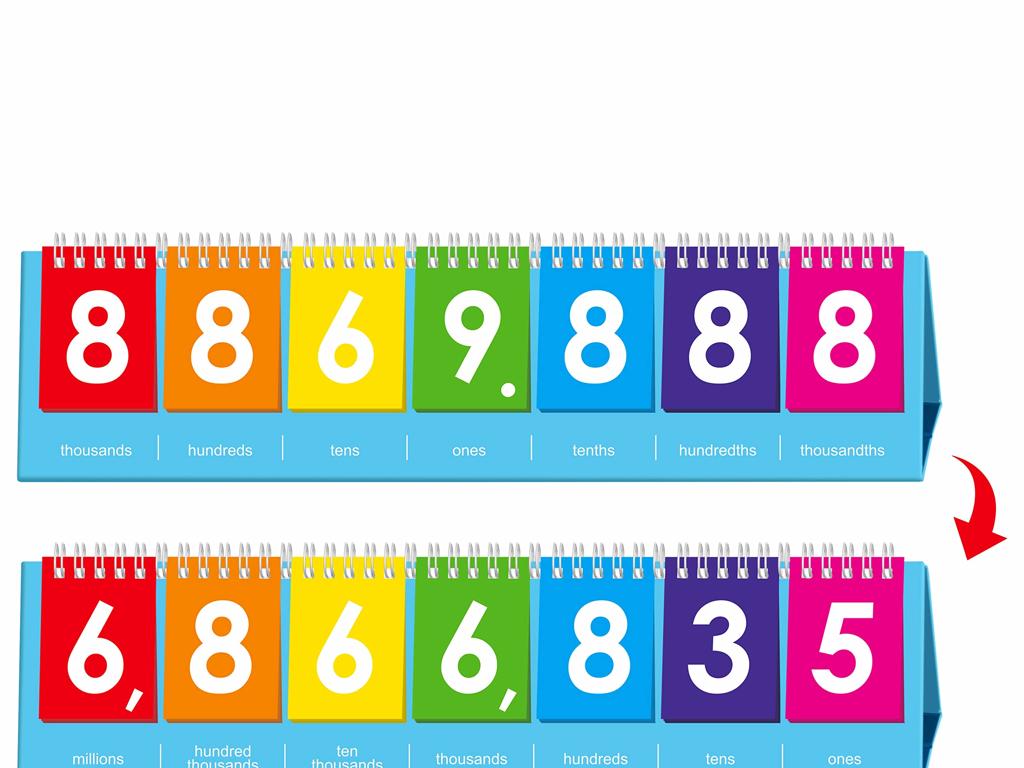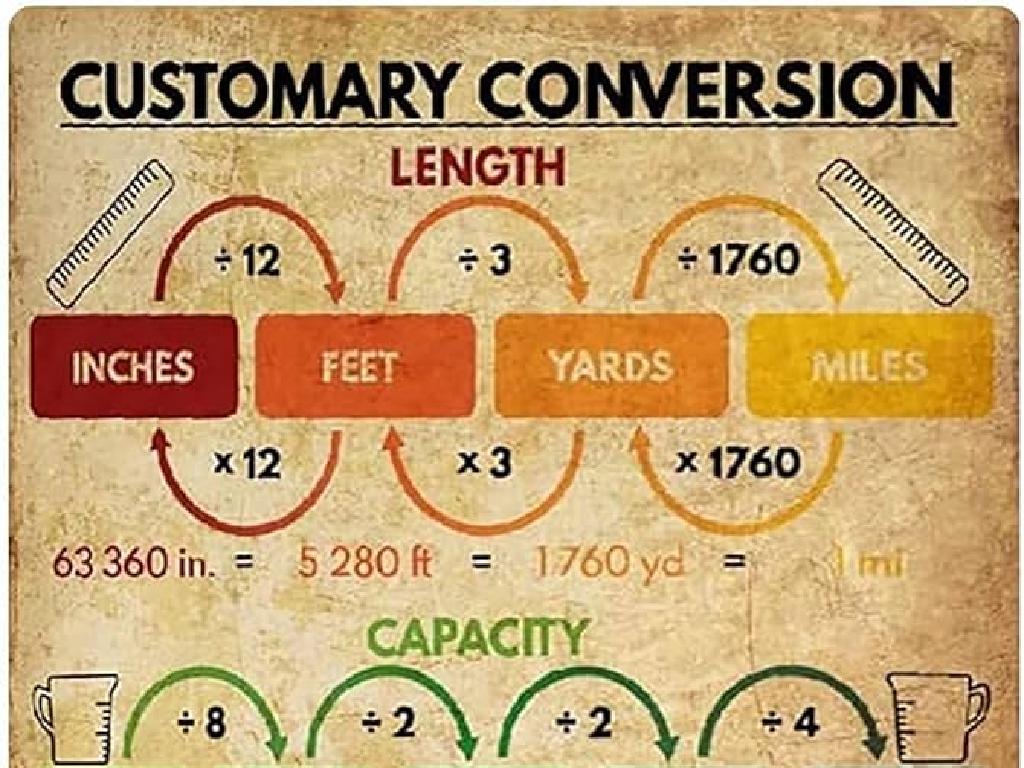Rectangles: Relationship Between Perimeter And Area Word Problems
Subject: Math
Grade: Fourth grade
Topic: Area
Please LOG IN to download the presentation. Access is available to registered users only.
View More Content
Exploring Rectangles: Perimeter and Area
– What is a rectangle?
– A rectangle has 4 sides and 4 right angles.
– Perimeter: Adding all sides
– To find the perimeter, add up the length of all four sides.
– Area: Length times width
– Multiply the length by the width to find the area.
– Real-life application of measurements
– Use these measurements to plan spaces, like gardens or rooms.
|
This slide introduces students to the basic concepts of perimeter and area within the context of rectangles. Begin by defining a rectangle and its properties. Explain that the perimeter is the total distance around the shape, which can be found by adding the lengths of all sides. For the area, teach students the formula (length x width) and how it represents the space inside the rectangle. Emphasize the practical applications of these measurements in everyday life, such as determining the amount of paint needed for a wall or the size of a garden plot. Encourage students to think of other examples where they might need to calculate perimeter and area.
Exploring Rectangles
– A rectangle has four sides
– Opposite sides are equal
– Side AB is equal to side CD
– Sides are parallel
– Side AB is always parallel to CD
– Four right angles
– Each angle in a rectangle is 90 degrees
|
This slide introduces the basic properties of rectangles, which is fundamental for understanding more complex concepts like perimeter and area. Emphasize that rectangles are a type of quadrilateral with special characteristics: four sides, opposite sides that are equal in length and parallel, and four angles that are all right angles. Use visual aids like drawings or manipulatives to show these properties. Encourage students to identify rectangles in the classroom or at home to connect the concept to real-life objects. This will set the stage for solving word problems involving the perimeter and area of rectangles.
Exploring the Perimeter of a Rectangle
– Perimeter: border length of a rectangle
– Perimeter formula: 2(length + width)
– Add length and width, then multiply by 2
– Let’s calculate a rectangle’s perimeter!
– Example: Length=5, Width=3, Perimeter=2(5+3)=16 units
– Practice with different rectangles
– Try finding perimeter with various length and width
|
This slide introduces the concept of perimeter as it relates to rectangles. Begin by explaining that the perimeter is the total distance around the edge of the rectangle. Show how to use the formula Perimeter = 2(length + width) to calculate the perimeter. Work through an example as a class, and then provide a few different sets of measurements for students to practice on their own or in small groups. Encourage students to double-check their work by adding the lengths and widths separately and then multiplying by two. This will reinforce their understanding of the formula and the concept of perimeter.
Exploring the Area of a Rectangle
– Area represents space inside
– Formula: Area = length x width
– Multiply the longer side (length) by the shorter side (width)
– Practice finding rectangle areas
– Calculate area for various rectangles using the formula
– Use different lengths and widths
– Try with various pairs to see how area changes
|
This slide introduces the concept of area as it pertains to rectangles, a fundamental aspect of understanding two-dimensional shapes. Begin by explaining that the area is the amount of space inside the boundary of a rectangle. Reinforce the formula for calculating the area by multiplying the length by the width. Provide students with practice problems involving rectangles of different sizes to apply the formula. Encourage students to notice how changing the length and width affects the area. This activity will help solidify their understanding of the relationship between a rectangle’s dimensions and its area. Prepare to assist students with multiplication and to answer questions about why the formula works.
Exploring Rectangles: Perimeter vs. Area
– Perimeter and area are different
– Changing rectangle size changes both
– If you make a rectangle longer or wider, you add more to the edge and inside space.
– Example: Lengthening increases both
– A rectangle going from 4×2 to 6×2 adds 4 to the perimeter and 4 to the area.
– How perimeter and area relate
|
This slide aims to help students understand the distinct concepts of perimeter and area, and how altering the dimensions of a rectangle affects both measurements. Perimeter is the total distance around the rectangle, while area represents the space within it. By providing an example, such as increasing the length of a rectangle, students can visualize how both the perimeter and the area increase. It’s crucial to emphasize that although both measurements change, they do so in different ways. Encourage students to think about real-life situations where they might need to measure perimeter or area, such as fencing a garden (perimeter) or laying down sod (area).
Perimeter Word Problems: Fencing a Garden
– Understanding perimeter
– Perimeter is the total distance around a shape
– Rectangular garden example
– If our garden is 5m by 3m, how long is the fence?
– Step-by-step problem solving
– Add up all sides of the rectangle to find the perimeter
– Calculate total fence length
– For a 5m by 3m garden, we need 16m of fencing (5+3+5+3)
|
This slide introduces students to the concept of perimeter through a practical word problem. Begin by explaining that perimeter is the total distance around the edges of a shape. Use the example of fencing a rectangular garden to make it relatable. Guide students through the steps of solving the problem: identify the lengths of all sides, and then add them together to find the total length of fence needed. For the example provided, ensure students understand how to double the lengths of the two different sides and then add them to find the perimeter. Encourage students to visualize the problem and draw a diagram if it helps. This exercise will help solidify their understanding of perimeter in a real-world context.
Area Word Problem: Planting Grass
– Understanding the problem
– We want to plant grass in a garden. How much area will it cover?
– Calculate the garden’s area
– Measure the garden’s length and width, then multiply: Area = length x width
– Steps to find the solution
– 1. Read the problem carefully. 2. Identify length and width. 3. Use the formula. 4. Write down the answer.
– Discuss our answers
|
This slide introduces students to solving a practical word problem involving the area of a rectangle. Begin by reading the problem statement together and ensure students understand the question. Next, guide them through the process of finding the length and width of the garden, which are necessary to calculate the area. Emphasize the formula for the area of a rectangle (Area = length x width) and have students apply it to find the solution. Encourage them to write down each step and their final answer clearly. After solving, facilitate a discussion where students can explain how they arrived at their answers and confirm the correct solution.
Class Activity: Create Your Own Rectangle
– Gather materials: graph paper, ruler, pencil
– Draw two unique rectangles
– Calculate perimeter and area of each
– Perimeter: Add all sides, Area: Length x Width
– Share results with the class
|
This activity is designed to help students understand the relationship between the perimeter and area of rectangles through hands-on experience. Provide each student with graph paper, a ruler, and a pencil. Guide them to draw two different rectangles, ensuring they label the length and width. Then, instruct them to calculate the perimeter by adding all sides and the area by multiplying the length by the width. After calculations, students will present their rectangles and findings to the class, fostering a collaborative learning environment. Possible variations for different students could include using different units of measurement, comparing the rectangles they’ve drawn, or challenging them to find a rectangle with a given perimeter or area.
Wrapping Up Rectangles: Homework Assignment
– Congratulations on learning about rectangles!
– Homework: 5 perimeter & 5 area problems
– Find and solve problems on pages 34-35 in your workbook
– Use your workbook for practice
– Check answers in the back to see how you did
– Keep practicing for perfection!
|
This slide concludes the lesson on rectangles and transitions students to their homework assignment. The homework is designed to reinforce the concepts of perimeter and area. Students should refer to their workbooks, where they will find a variety of problems to solve. Remind them that the key to mastering math is practice, and encourage them to try their best on each problem. Offer to answer any questions they might have during the next class. Additionally, remind them to check their answers using the answer key provided in their workbook to self-assess their understanding.






